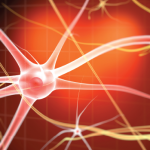Dr. Chiaramonte concluded with an important message: “The goal of pain management isn’t the pain number. It’s function and quality of life. Did you start playing tennis again? Can you walk the dog or clean the house? This is the stuff that matters,” she said.
Summary
Pain is more than just nociception, and pain management is more than just medication. We can help our patients cope with chronic pain by using multifaceted management strategies. Education about the relationship between perceived threat and pain, as well as central sensitization, is key. In essence, “hurt doesn’t always mean harm.”
ad goes here:advert-1
ADVERTISEMENT
SCROLL TO CONTINUE
Samantha C. Shapiro, MD, is an academic rheumatologist and an affiliate faculty member of the Dell Medical School at the University of Texas at Austin. She received her training in internal medicine and rheumatology at Johns Hopkins University, Baltimore. She is also a member of the ACR Insurance Subcommittee.
References
- Campbell CM, Quartana PJ, Buenaver LF, et al. Changes in situation-specific pain catastrophizing precede changes in pain report during capsaicin pain: A cross-lagged panel analysis among healthy, pain-free participants. J Pain. 2010 Sep;11(9):876–884.
- Cheng CA, Chiu YW, Wu D, et al. Effectiveness of Tai Chi on fibromyalgia patients: A meta-analysis of randomized controlled trials. Complement Ther Med. 2019 Oct;46:1–8.
- Menzies V, Taylor AG, Bourguignon C. Effects of guided imagery on outcomes of pain, functional status, and self-efficacy in persons diagnosed with fibromyalgia. J Altern Complement Med. Jan–Feb 2006;12(1):23–30.
- Uhlig T. Tai Chi and yoga as complementary therapies in rheumatologic conditions. Best Pract Res Clin Rheumatol. 2012 Jun;26(3):387–398.
- Cherkin DC, Sherman KJ, Balderson BH, et al. Effect of mindfulness-based stress reduction vs cognitive behavioral therapy or usual care on back pain and functional limitations in adults with chronic low back pain: A randomized clinical trial. JAMA. 2016 Mar 22–29;315(12):1240–1249.
- Cohen SP, Bhatia A, Buvanendran A, et al. Consensus Guidelines on the Use of Intravenous Ketamine Infusions for Chronic Pain from the American Society of Regional Anesthesia and Pain Medicine, the American Academy of Pain Medicine, and the American Society of Anesthesiologists. Reg Anesth Pain Med. 2018 Jul;43(5):521–546.

